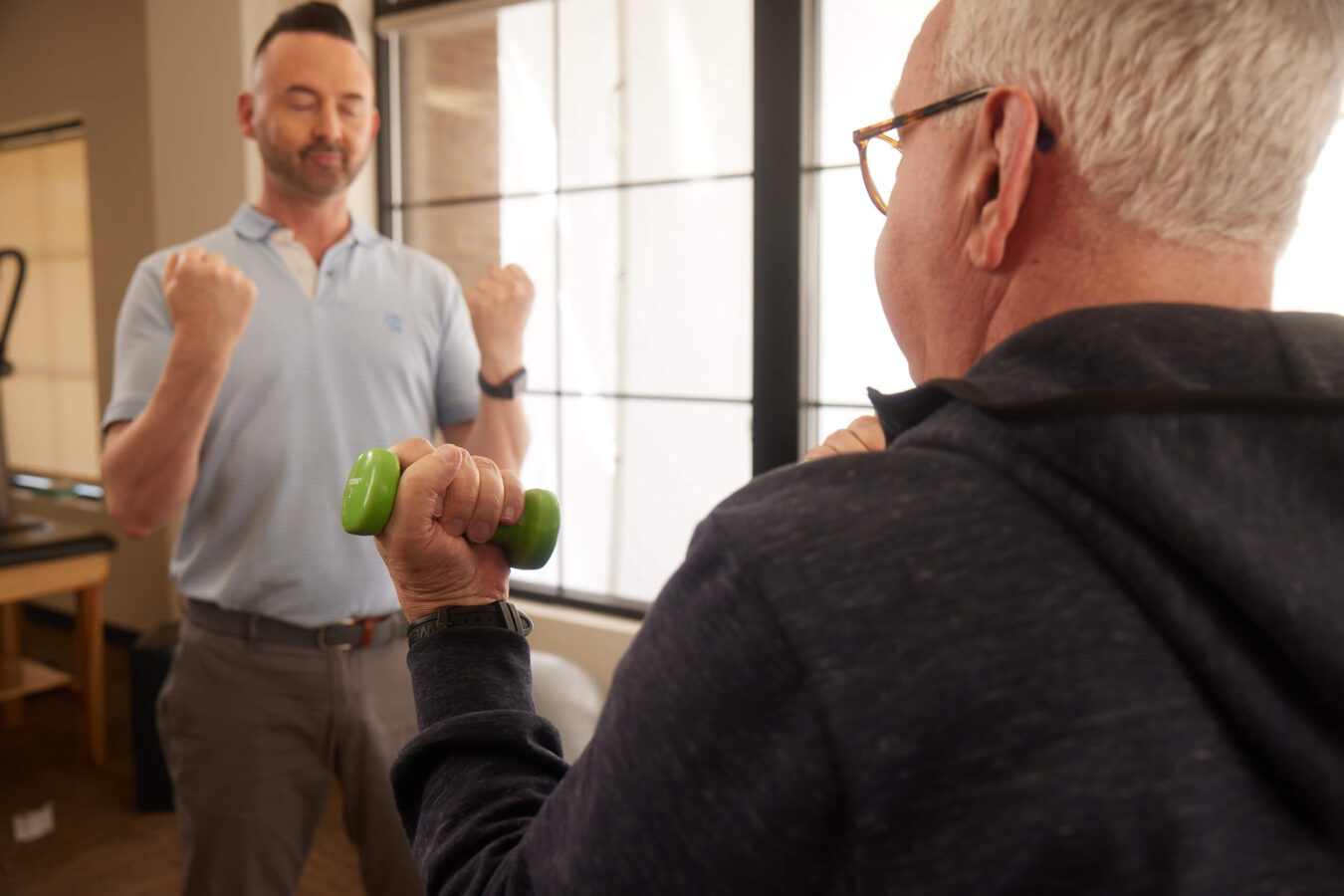
Any type of surgical procedure comes with certain benefits, risks, and side effects. And the steps you take after surgery will impact your recovery—positively or negatively. Physical therapy is an evidence-based treatment that helps patients regain mobility and function and speed healing after a surgical procedure. Here are nine impressive benefits of physical therapy after surgery for patients of all ages and stages of life.
Muscle strength is vital for your body’s overall health and wellness. But if you’ve been living with an injury for a while, or you have just had surgery to repair an injury, the affected area and structures surrounding it may be weak.
Physical therapists are trained to understand what type of exercise each tissue (muscles, tendons, ligaments) needs to be its strongest and heal the quickest. Strategic exercise under the guidance of a trained physical therapist helps you regain strength at the surgical site and throughout the body.
Patients who have joint-replacement surgery, particularly in the hip or knees, must relearn how to walk and move well with their new hardware. Physical therapy improves balance and stability in patients after surgery, allowing patients to walk, jog, jump, or bike again with confidence. Balance exercises also reduce the risk of falls and the possibility of reinjury in post-operative patients as well.
Scar tissue is comprised of cells and collagen that cover the site of injury. It forms when normal tissue is damaged by injury, disease, or surgery, and is the body’s way of trying to replace and heal damaged areas. Developing a scar is a normal healing process
Tissue that isn’t loaded correctly can result in scar tissue that is dense and fibrous. This can impede movement, flexibility, and strength around the surgical site. As “movement experts” physical therapists can safely and effectively provide exercises and manual therapy to help your tissues and scars to be smooth and pliable allowing the limbs to move freely.
Reducing dense scar tissue is one way physical therapy improves flexibility and mobility for patients after surgery. Myofascial release, massage, and manual manipulation are other techniques designed to increase range of motion after an invasive procedure. The goal of physical therapy is to encourage smooth, pain-free movement so you can start feeling like yourself again.
Some soreness is to be expected after most operative procedures. And many patients expect post-surgery physical therapy to be painful too. But that’s not the case. Physical therapists have a number of techniques and tools at their disposal to reduce post-operative pain, stiffness, and inflammation.
Physical therapists are skilled and trained to identify, diagnose, and treat the underlying musculoskeletal issues causing pain—for real and lasting pain relief. That lowers the need for opioid pain-killers that only mask the pain while increasing the risk of dependence.
In fact, the Center for Disease Control and Prevention (CDC) encourages healthcare providers to reduce opioid use in favor of natural alternatives like physical therapy when medically appropriate. One research study found that among more than 67,000 total knee replacement patients, the introduction of physical therapy soon after surgery reduced the risk of long-term opioid use. Consult your healthcare provider and physical therapist to discuss the best pain relief options after your surgery.
If you jump right back into high-intensity activity after joint replacement or other major surgery, your healing can actually be impeded or can result in complications. Yes, exercise is essential after a surgical procedure—but it needs to be safe and measured. Physical therapists introduce movement in a way that won’t disrupt the healing process or “undo” your surgical results.
Lack of movement not only raises the risk of post-surgical stiffness, weakness, and other complications near the site of the procedure; it also increase the chance of cardiopulmonary complications as well.
Movement is important to prevent blood clots, contractures, infection, and other secondary issues that come with being immobile. Physical therapists know when and how to incorporate strengthening and stretching to keep you fit and healthy throughout your healing journey.
Even when surgery is the right decision for your health and wellness, it is still stressful on the body. And the body responds accordingly with certain physiological changes that are referred to as the “surgically induced stress response.”
In a surgical setting, this stress response can actually be more detrimental than helpful. Without getting too technical, the chemical and hormonal changes that occur during the body’s stress response can slow wound healing and impair immune function.
Physical therapy counteracts these changes to encourage healing. Exercise, manual therapy, and other techniques increase blood flow to the surgical area and across the body. By improving circulation, you can reduce inflammation and promote recovery.
Physical therapy makes sense for patients who undergo a wide range of medical procedures and operations, including:
There is a misconception that physical therapy is only necessary for patients with specific musculoskeletal injuries or conditions, but that’s not actually true. Physical therapy also helps those recovering from any type of surgery resume physical activity safely and gradually.
You may not feel quite up to physical therapy after an operation, but in most cases, post-operative exercise should begin as soon as possible for the best results. Patients who get moving quickly are more likely to have better outcomes.
Staying immobile for too long after a procedure decreases muscle strength and heart and lung capacity and reduces mobility. Physical therapists prevent this through safe, assisted movement in a controlled environment.
Are you scheduled for a procedure and want to discuss the benefits of physical therapy before surgery and after? Find a physical therapy clinic near you.

